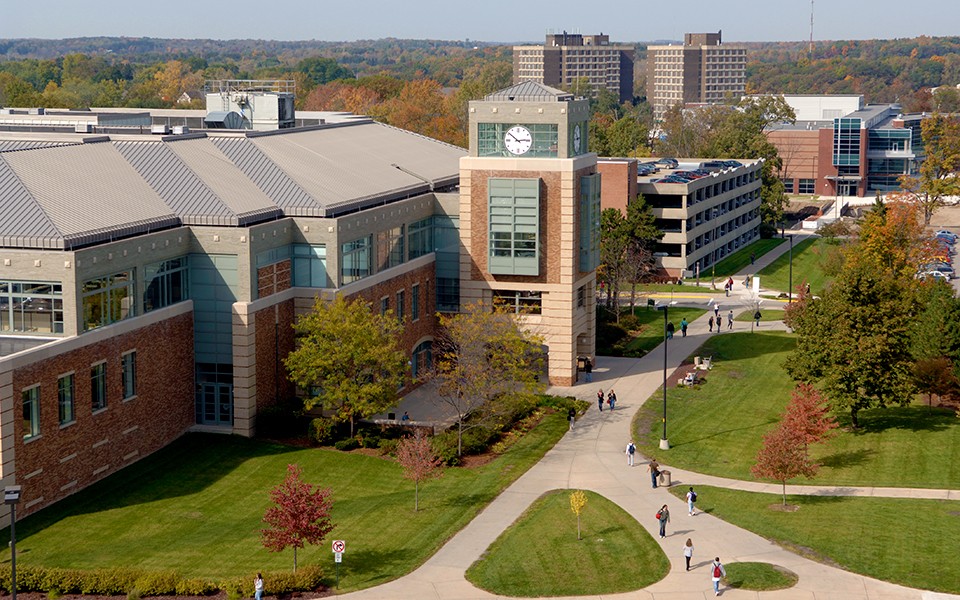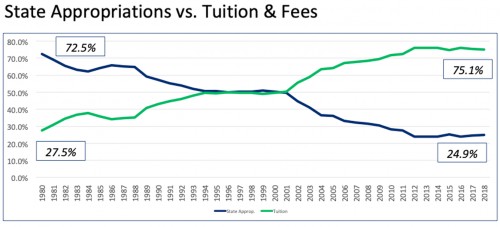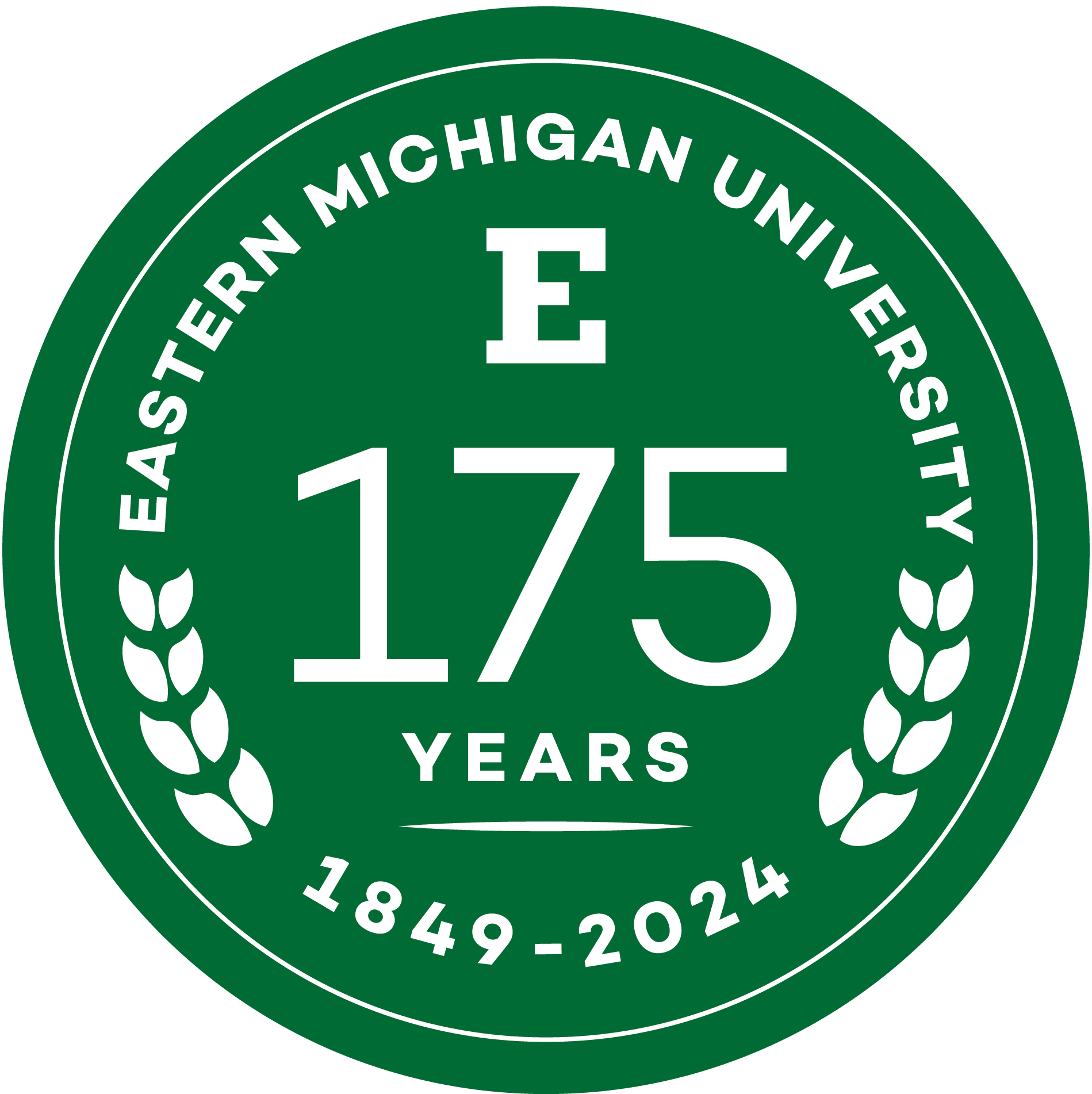Eastern Michigan University 2019-20 general fund budget highlights commitment to academic programs and strong level of financial aid for students

YPSILANTI – Eastern Michigan University continued its emphasis on investing in high-demand academic programs, student success and updating and building key facilities in adopting a General Fund budget Thursday (June 13) for the coming academic year.
The Eastern Michigan University Board of Regents approved a general fund budget of $293.6 million of revenues and corresponding expenses, a reduction of $17.1 million from the 2018-19 General Fund operating budget.
The University also maintained its focus on minimizing net costs for students by offering a high level of financial aid. The expenditure budget for the upcoming year includes $50.8 million in University-sponsored financial aid. Over the last 12 years, the University has increased financial aid by more than 135 percent from the $21.4 million in aid provided in 2007-2008, reflecting Eastern’s mission to be an institution of opportunity, with the state’s most diverse student body.
“The budget approved today focuses on the priorities of the University, which are maintaining excellent academic programs and serving students’ academic and career needs while responding to rapidly changing demographics,” said President James Smith.
Among the student-based changes at Eastern is the current, $40 million renovation of Sill Hall, home of the newly launched College of Engineering and Technology, to help accommodate the addition of new engineering programs. Eastern is also collaborating with IHA and St. Joseph Mercy Health System in building a new community health center on the northwest section of campus. Other major current projects include renovation of the Rec/IM Building and constructing the new Student-Athlete Performance Center.
The budget reflects the University’s emphasis on investing in academic quality and ensuring student success, leading to productive and fulfilling careers after graduation. Those investments include the recent addition of new academic programs, such as mechanical engineering, electrical and computer engineering, fermentation science and neuroscience, which has shown 400 percent growth since its launch in fall 2016.
In January, the University competed renovations on Strong Hall, the third and final phase of the Science Complex, a facility that now stamps Eastern as one of Michigan’s top institutions in terms of STEM Education.
Such a commitment to academic excellence has been recognized by the University’s consistently high rankings in a variety of areas. Those include a listing as the country’s top program in clinical research administration, designation as the number one military friendly school in Michigan and the Princeton Review ranking Eastern among the “Best in the Midwest” for 16 consecutive years.
The Board of Regents also approved a tuition and required fees increase of 4.4 percent, for undergraduate students taking 30 credits a year, as calculated by the State of Michigan’s guidelines on performance funding and tuition reporting, for the 2019-20 academic year. Tuition for graduate students and doctoral students will increase 5 percent. With the increase, a resident undergraduate paying $13,083 this past year would pay $13,658 for an academic year of 30 credits – in the mid-range among Michigan’s 15 public universities.
The State of Michigan’s Senate Fiscal Agency has recommended to the Governor a tuition restraint cap of 4.4 percent. If there are changes to the assumptions used to develop the University’s general fund budget when the State of Michigan budget is approved by the Legislature later this summer, the University will adjust tuition and fees in order to continue to maintain a balanced budget. The tuition increase will not exceed any tuition restraint cap that the State of Michigan may impose.
Eastern Michigan University’s average annual tuition and fee increase over the past decade is 3.87 percent. Since 1980, state appropriations have dramatically declined as a portion of Eastern’s general fund budget. In 1980, state aid accounted for 72.5 percent of the University’s revenues to 27.5 percent coming from tuition and fees. Those numbers are now reversed, with state aid making up less than 25 percent of Eastern’s general fund revenues and tuition representing more than 75 percent. (See accompanying chart below).
Since 2002, state appropriations to Eastern have fallen by about 11 percent, from a high of $87.6 million in 2002 to $77 million this past year.
Revenues in the FY20 budget include $210.3 million in tuition and fees; a $77.7 million state appropriation, which also is yet to be determined by the state; $2 million in investment income; and $3.6 million in in departmental activities and other revenue sources.
The Regents also approved an Auxiliary Activities Budget of $46.8 million. Auxiliary activities include housing, food service and athletics operating costs, along with costs for other services.

About Eastern Michigan University
Founded in 1849, Eastern is the second oldest public university in Michigan. It currently serves more than 18,000 students pursuing undergraduate, graduate, specialist, doctoral and certificate degrees in the arts, sciences and professions. In all, more than 300 majors, minors and concentrations are delivered through the University's Colleges of Arts and Sciences; Business; Education; Engineering and Technology; Health and Human Services; and, its graduate school. EMU is regularly recognized by national publications for its excellence, diversity, and commitment to applied education. For more information about Eastern Michigan University, visit the University's website.
More Stories

Eastern Michigan University professors receive Disability Advocacy Hall of Fame Award from The Arc of Oakland County Michigan.

Eastern Michigan University alumna, Aleksandra Efimova, leads self-made brand, RP to acquisition by renowned industry leader in dance footwear and apparel, Bloch.

Eastern Michigan University Vice President for Enrollment Management Katie Condon-Martin to help shed light on FAFSA “fiasco” as part of Bridge Michigan Zoom discussion on April 24.

Eastern Michigan University awards Summer Research and Creative Activity Grants.

Eastern Michigan University to launch new Bachelor of Business Administration in Financial Planning and Wealth Management degree.

